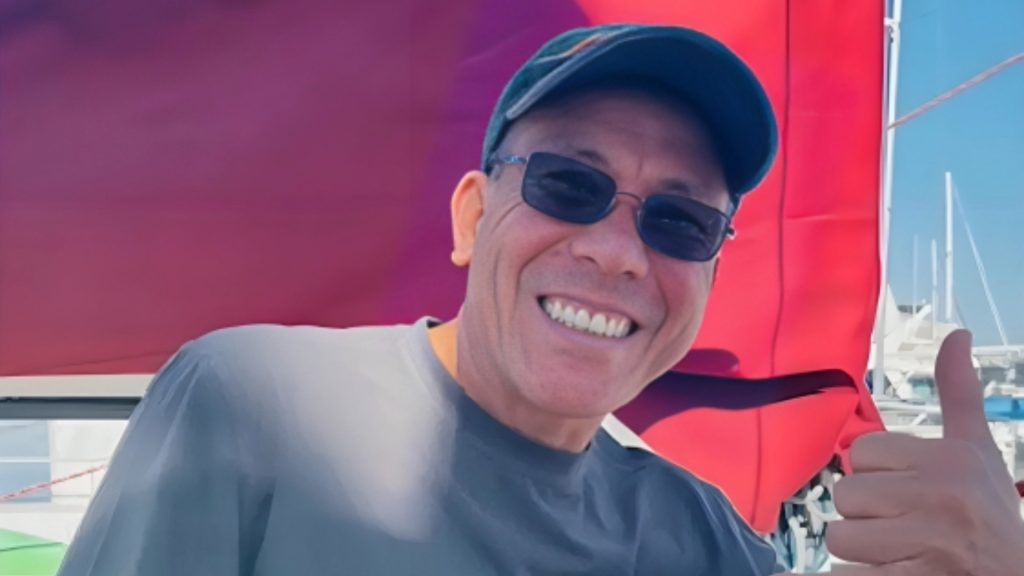Noel Rubio was finally found over one month after he was reported missing at sea. According to the US Coast Guard, the 60-year-old man was supposed to arrive in Hawaii during a three-week sail. However, he raised concerns with his family and maritime authorities when he did not arrive on schedule.
The Timeline That Raised Concerns About His Journey
Rubio reportedly boarded his sailboat named “Malulani” on December 28 in Long Beach, California. The expectation was for the journey to end with his arrival in Kaneohe, Oahu, Hawaii no later than January 18. Sadly, Rubio’s family understandably became very concerned when he did not arrive in Oahu as scheduled.

Further reports confirm that his family was not able to make contact with him for a minimum of 37 days. According to CBS News, his most recent contact at the time was when he used his cell phone to speak with a friend. Rubio was located south of Catalina Island, California at the time of the phone call.
Reports of His Safety Confirmed By The Coast Guard
Officials from the US Coast Guard posted a message on Facebook Sunday confirming that both he and his vessel Malulani were located. Rubio apparently had also contacted his family to ensure them of his safety and alleviate their concerns as well.

The report further stated that Rubio was safe and was en route to his desired destination in Hawaii. The post made it clear that initial indications showed that it was just a “slow voyage” that prevented him from arriving in Hawaii as previously scheduled. No further details specifically about how Rubio was located were disclosed by the Coast Guard.
Details Of The Search Efforts And Strategies Used To Locate Rubio
Maritime officials focused on determining the location of Rubio’s 32-foot Westsail sloop boat shortly after the initial launch of their search efforts. This including remitting multiple Urgent Mariner Information Broadcasts (UMIBs). The officials also conducted harbor checks in Hawaii and California as well as Mexico.

The authorities reportedly sought further assistance by relying on the insight of other experienced and knowledgeable trans-Pacific sailors regarding what Mr. Rubio may have used as alternate routes in his journey to Hawaii.
Other Experts Were Involved In The Search And Rescue Efforts
The Coast Guard reportedly relied on the expertise of meteorological advisors as well during the search and rescue of Noel Rubio. The purpose of this advisement was to determine the impact of varying weather patterns on the missing sailor’s travel plans.

One report confirms that the handling characteristics of any boat are drastically affected by current and wind regardless of the hull type or power combination of the vessel. A stiff crosscurrent or crosswind could force even the most practical travel plans to be rerouted and revised in an emergency situation. In an official press release posted on the U.S. Coast Guard news website, they expressed their appreciation for the expert advisors that assisted in the search for Noel Rubio.
Additional Details About Communication With The Sailor
The Coast Guard confirmed in previous reports that the Malulani sailboat was equipped with a VHF-FM marine band radio within it. However, that was apparently the only type of communication method available to him onboard. This was in addition to the cell phone used to contact Rubio’s friend.

Douglas Samp, the mission coordinator for the Search & Rescue (SAR) team with the Coast Guard’s Alameda Rescue Coordination Center went on record to express the importance of having multiple communication methods on hand when at sea.
Analyzing The Importance Of Multiple Communication Methods
Samp explained that any mariner who wants to conduct an open-ocean crossing should have multiple methods of communication available onboard with them. He specifically referenced such examples as an HF DSC radio, VHF-FM DSC radio, and satellite communications.

The Coast Guard official further recommended that an emergency position-indicating radio beacon (also referred to as an “EPIRB”) be used as a last resort to notify local SAR authorities of their position in the event of an emergency. Having multiple tools available would allow a sailor to request and hopefully receive assistance in a timely fashion in the event that one or more of the other communication tools malfunction or are otherwise unavailable.
The Differences Between VHF And MF/HF Radios
Those who may not be familiar with maritime travel and communications would likely not know very much about VHF and MF/HF radios. A VHF (Very High Frequency) radio focused on radio waves ranging from 30 to 300 MHz. These radios are typically used for short-range communication between coast stations, ships, and aircraft.

MF/HF (Medium Frequency/High Frequency) radios cover ranges from 300 kHz to 30 MHz. These radios come in handy for long-range communication between coast stations and boats in addition to navigational warnings and any type of maritime safety information (MSI) that is broadcasted.
How Does An EPIRB Work?
The news of this 60-year-old sailor being found and the Coast Guard’s response has raised awareness of the different communication tools available that could have drastically reduced the timeline. For instance, the Emergency Position-Indicating Radio Broadcast with a 406 MHz frequency offers worldwide coverage, pinpoint accuracy, and a quick response time that is faster than similar devices.

The boater would activate the EPIRB in a state of distress. The device would then send out a repeated SOS signal that would quickly be detected by satellites orbiting the Earth. A ground station would then receive the signal for verification purposes before informing the central command station (or MCC) to launch the search and rescue efforts. The MCC would then relay the boater’s location to the nearest Air Force Rescue Coordination Center or Coast Guard.
How ‘Good Samaritans’ Saved Another West Coast Sailor
An unidentified sailor was found alive back in October after being lost in sea for almost two week off the coast of Cape Flattery in Washington State. In that specific case, the Coast Guard’s search and rescue efforts to save him and one other person produced no results and were suspended.

According to the report, the two people on the 43-foot vessel named “Evening” left the harbor on October 12 and were scheduled to return on October 15. The agency suspended their search efforts after covering 14,000 square miles of water. Two men referred to as “Good Samaritans” by news outlets found him on a life raft two days after the search was suspended. Reports claim that the rescuers, Ryan Planes and his uncle John from British Columbia, made the man breakfast and gave him three bottles of water.
Missing Sailor From New Jersey Found By Another Sailor
The news story of Mr. Rubio being found may also remind people of the similar account of the sailor from New Jersey en route to Bermuda back in November. Reports confirm that he lost communication with his family on November 6, which led to them contacting the U.S. Coast Guard.

Another sailor located the battered vessel nearly 270 nautical miles away from the North Carolina shores. Coast Guard officials were able to locate the sailor and transferred him aboard one of their cutters. A Coast Guard training center in southern New Jersey became the venue of that family’s reunion.





GIPHY App Key not set. Please check settings